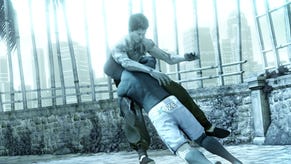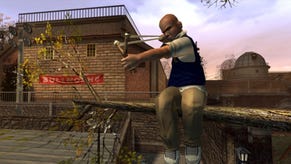Face-Off: Sleeping Dogs
John Woof.
| - | Xbox 360 | PlayStation 3 |
|---|---|---|
| Disc Size | 6.2GB | 7.2GB |
| Install | 6.2GB (optional) | 4142MB |
| Surround Support | Dolby Digital | Dolby Digital, DTS, 5.1LPCM |
Sleeping Dogs doesn't redefine the openworld sandbox genre in any meaningful way, but it is a strong, story-driven title that takes advantage of its Eastern setting to provide a new take on a game style in need of some new ideas. The focus on hand-to-hand combat over gunplay is fitting for a game about a turf war engulfing Triad gangs, while Hong Kong, where the action is set, is highly detailed and full of life, creating a believable world in which the lines between cop and criminal are slowly blurred as you progress into the brutal underworld.
While the overall experience isn't as polished as the likes of GTA or Red Dead Redemption, it's somewhat remarkable that United Front Games has been able to hand in such a solid product given the rocky development cycle of the title. Originally picked up by Activision and re-purposed as a sequel to the True Crime series, the game was later delayed and eventually cancelled by the publisher, before being signed up by Square Enix, who enlisted its London studio to help finish the game.
Despite the unfortunate circumstances surrounding the title's long and troubled development, it's clear the studio put a lot of time and care into transforming its vision into a game. The technology behind Sleeping Dogs is paramount in realising the complex world in which the action takes place, and the developer's use of a deferred shading engine allows for hundreds of dynamic light sources on-screen, from headlights and shop signs reflecting off of the wet roads to the flashes of thunder in the night sky. These elements of the game work in tandem with a real-time day/night cycle to bring a sense of life to the world.
The use of a deferred shading set-up has implications for both consoles, resulting in two distinct implementations. On Microsoft's system, Sleeping Dogs adopts a native 1200x720 presentation, with an 80-pixel horizontal upscale to 720p, while on the PS3 we're looking at a much lower 1152x640, which has more severe implications with regards to overall image quality. Anti-aliasing on both consoles is a post-process, most likely provided by NVIDIA's popular FXAA solution, although we find that the PS3 uses a more aggressive edge-detect algorithm in order to smooth over the additional jaggies created by the heavy upscale.
"The overall experience of playing Sleeping Dogs on console is mostly very similar, but the Xbox 360 version has a clear resolution advantage and a number of more minor visual improvements."
The impact of this difference is clearly seen in our head-to-head video above and in our Sleeping Dogs 720p comparison gallery. While the 360 game gives a passable impression of a native 720p presentation, it looks significantly blurrier on the PS3, which is the combination of the much heavier upscaling and a stronger FXAA solution covering the final image in a veil of softness. Finer texture details that are visible on both platforms are smoothed over and edges feature a distinct softness that is regularly apparent with anti-aliased sub-HD games. Specular highlights are also subdued on the PS3 due to the stronger edge-detection being employed, although this doesn't come across as a particular downside given that the characters can look a little too shiny in some scenes on the 360.
Looking at the rendering set-up of both games, the 80-line deficit on the 360 is quite revealing, suggesting the developers worked hard to integrate the deferred buffers into the 10MB of eDRAM attached to the system's Xenos GPU. Meanwhile the use of a sub-HD presentation on PS3 is most likely down to performance and memory issues: the framebuffer doesn't need to fit into a small 10MB space, so instead it is rendered directly into the system's 256MB VRAM. However, larger buffers would eat into this area, thus leaving less room for textures and other effects. On top of that, rendering in a lower resolution saves precious GPU time, which is used to help maintain a more stable frame-rate.
Beyond Resolution: Nips and Tucks on PS3
Aside from the obvious resolution differences, it is clear that the PS3 version is missing some of the more intricate texture details found on the 360, a situation not helped by the more aggressive FXAA implementation. We also find that normal maps feature less distinctive bumps and ripples, leading to the affected surfaces looking a touch blockier. The reason for this is that lower-resolution artwork is used on many objects throughout the game, resulting in visible detail loss, while normal maps appear to be using a different, more lossy compression scheme which creates artifacts on surfaces that use the effect. The Xenos GPU has access to improved texture compression technology compared to RSX, which may explain this.
Elsewhere, a few other minor compromises have been made to the PS3 code. The level of anisotropic filtering is lower on the Sony platform, impacting the clarity of the artwork from a distance, and lower-quality LOD (level of detail) models are used during the cut-scenes, which see a number of small detail-enhancing features missing. The hair on the characters has been simplified slightly on the PS3 and the normal mapping present on the jewelry they are wearing is also absent.
"Cut-scenes see lower-quality LOD models on PS3, slightly more simplified hair, and very minor compromises to normal mapping on the characters."
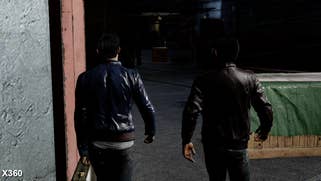
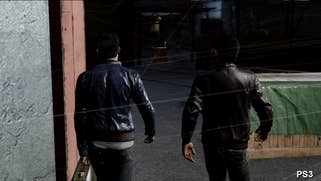


Meanwhile, in terms of post-processing effects, motion blur appears to be identical on both formats, although depth-of-field is stronger on the PS3. Perhaps the developers are using the heavier version of the effect to hide the reduced texture quality and lower LOD differences on the console by blurring them out in motion. It certainly makes the more conspicuous pieces of lower-resolution artwork much less apparent.
Regardless of these differences, Sleeping Dogs still manages to impress with its sense of scale and the sheer amount of detail present in the Hong Kong cityscape. The three districts are huge, with plenty of memorable areas to discover; from the buzzing marketplace seen at the beginning of the game, to the bridge separating one of the three individual districts, the game is teeming with impressive locations. As the time of day changes, so too does the atmosphere - people disappear home from work in the evening, some of the glowing shop lights begin to fade in the early hours, and the general hustle and bustle of the city turns to a eerily sleepy silence as the streets become emptier.
The way the game's lighting engine is used to create and enhance these scenes is very impressive. Shadows creep across the ground as the sun sets, light reflections are cast over the windows on buildings, and at night-time scenes are filled with a variety of light sources which affect surrounding objects. Environmental effects - such as steam bellowing of a kitchen, or waves crashing onto the bay side - further add to the ambience the game offers.
With so much going on you would expect there to be a few compromises to be made in achieving this level of detail, and alas, there are. Alpha buffers - which are used to create smoke, fire and water effects - are rendered in low resolution on both platforms, while water surface shaders have been simplified and the environmental reflections reduced on the PS3. This has the effect of making large pools of water look a little murkier as a result, whereas these elements of the game have more depth and shine to them on the Xbox 360.
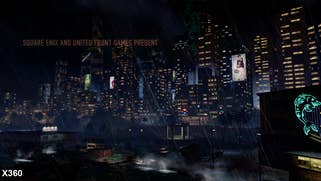


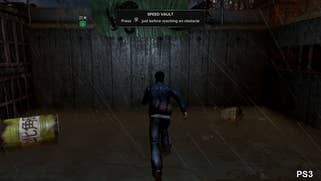
Sleeping Dogs: Console Performance Analysis
The opening gameplay sequences give us a very good look at how each version performs from a performance standpoint. What we have here is an identical scenario in both versions, with very closely matched gameplay set across a range of different situations. The game's initial 'chase' sequences show off Sleeping Dogs' impressive use of particle effects and lighting, along with environments ranging from sparse and open to densely packed - a good workout for the underlying tech.
The opening clip shows both versions being strongly taxed. Here the night-time setting sees the game ramp up the number of light sources in play while also introducing some heavy alpha effects, both of which cause performance to drop on both versions. The 360 tends to hold itself closer to the desired 30FPS update more often than the PS3, with smaller dips in scenes which tax the engine.
Generally there are lower levels of screen-tear on the Xbox 360 too. Conversely, the tearing can be quite unsightly on the PS3, with the tear-line moving up and down the screen creating a juddering effect, and this isn't helped by the more variable frame-rate which drops lower - and for longer.
"Across the run of play, there's not a huge amount to differentiate the Xbox 360 and PS3 games, but in certain taxing situations, the Sony platform can suffer in a direct A to B comparison."
However, across a more general run of play, these issues are far less severe on both consoles, and the PS3 version manages to equalise with the 360 for the most part - in fact, there are times when one version has a slight edge over the other, and vice versa. Outside of a few distinct issues both games manage to meet their 30FPS target reasonably well, with complex parts of the environment and quick camera pans being the most common cause for a dip in smoothness.
Performance in like-for-like scenarios can be determined by looking closely at the in-engine driven cut-scenes, which feature similar rendering loads being handled by both consoles. There are some similarities with our gameplay footage: both consoles seem to operate with roughly similar frame-rates, with the 360 taking a small lead in some scenes and PS3 in others. Both appear similarly matched when it comes down to the amount of screen-tearing we see - the games are both performing here as though v-sync is engaged, but the frame-buffer is flipped just a few milliseconds too late, resulting in a tear right at the very top of the screen. Thankfully this is almost impossible to notice.
These sequences target a top-end update of 30 frames per second, but maintaining this is far more difficult than it is during gameplay - presumably down to the highly detailed characters. Most of the time the cinematics are running at 20FPS, with some scenes managing to climb back up to the desired frame-rate - a typical profile for a double-buffered game running with v-sync. While the sound of an extended 20FPS isn't particularly appealing, in practice it works out fine as long as the update is consistent and that there are no sudden dips in performance.
"Cut-scenes on both platforms see v-sync engaged, bringing with it sustained bouts of 20FPS frame-rates when several characters are in play."
Away from graphical concerns, there is a distinct difference in loading times between the two platforms. They are a lot longer on the 360 if you choose not to install the game onto the hard drive. On the PS3 there's a 4GB mandatory install, but this results in some fairly quick loading times when switching between scenes during play - a 360 install equalises things somewhat and in some cases is actually faster. Either way, we'd suggest installing the game on the Microsoft console as without it the moments of black screen in-between the gameplay sequences tend to disconnect the player from the overall experience.
Sleeping Dogs: High-End Anti-Aliasing Punishes PC
Unlike many of today's cut-and-dried PC ports, the computer version of Sleeping Dogs has been given some very special attention. United Front Games are all too keen to stress the inclusion of DirectX 11 upgrades and other advanced graphical features which set apart this version from the console games. But just how much better does it look, and what kind of hardware configuration do you need to run it at its best?
Our 720p Xbox 360 vs. PC head-to-head video should give you a good idea of what to expect when running the game with its settings dialled up to the maximum extent.
"The PC version benefits from substantial improvements to texture quality and a vast range of enhanced DX11 effects, helping to make it the version of choice if you have a capable computer."
While the 360's near-native 720p resolution certainly gives that version a reasonably crisp image, it's clear that the PC game takes things a significant step further. Clean lines are joined with far less in the way of aliasing, aside from some minor sub-pixel artifacting which remains unprocessed. In short, it's rather good indeed. However, there is a major caveat that comes with acquiring this kind of image quality: the use of super-sampling.
Quite how well Sleeping Dogs will run on a range of systems is mostly dependent on which anti-aliasing setting you choose to activate. Dialling down other intensive features also helps, but this singular option is bar by the most impactful. The PC version offers up a range of edge-smoothing options, dubbed normal, high and extreme - the latter featuring a combination of post process-based FXAA along with super-sampling anti-aliasing (SSAA) to provide the cleanest image possible, which appears to max out at around 2x SSAA. Moving up the presets also reveals that the level of FXAA is also increased when going from normal to high, and SSAA when moving from high to extreme.
The decision to include super-sampling modes at all is somewhat puzzling, given that the technique requires colossal amounts of GPU processing power and memory bandwidth to create anti-aliased images. Super-sampling works by rendering the game in a higher resolution than the framebuffer before downsampling to form the final image for display. And this is what causes such a large performance hit to occur - the GPU is having to render far more pixels than will be displayed on the final output.
"Super-sampling anti-aliasing produces pretty much the best edge-smoothing you'll see, but the penalty on performance is extremely high indeed. FXAA with a high native rendering resolution is the better option for most PC owners."
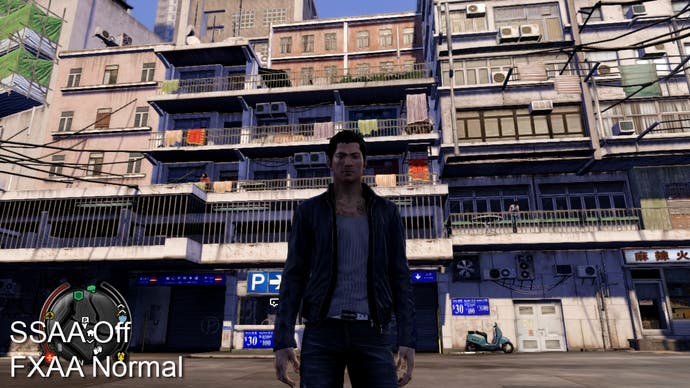
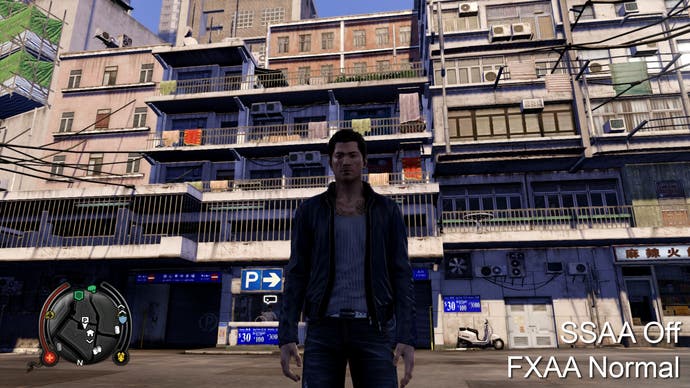

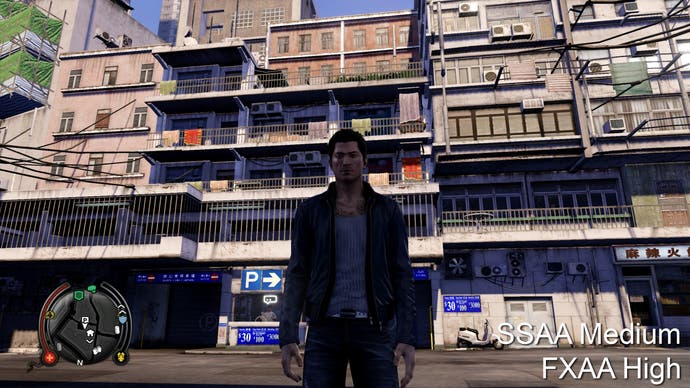

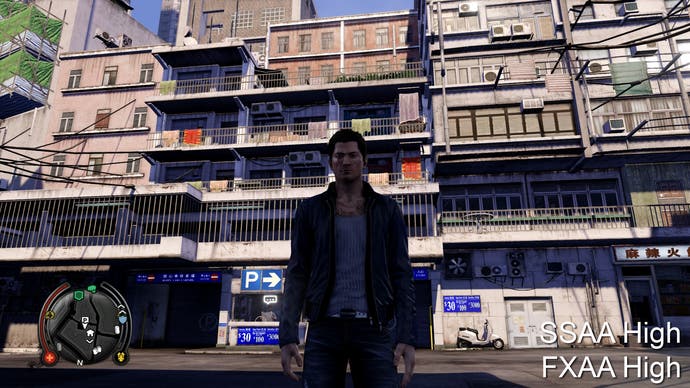
The screenshots above demonstrate the differences between the different anti-aliasing presets. The combination of FXAA and SSAA modes works very nicely at reducing the amount of shimmering edges on display, with far better sub-pixel coverage than what using a post-process edge smoothing solution alone would provide. However, running the game like this simply isn't playable on anything other than top-end hardware configurations: our Core i5 750 and GTX460 machine barely managed a consistent 20FPS update in 720p, and gave us a disastrous 10-15FPS in 1080p, for the most part resulting in an unplayable mess, with extremely laggy controls and near constant judder.
Dialling down to high settings boosts performance slightly, offering up an extra 10 to 20 frames per second depending on resolution, but the end result is still far below the threshold of what we'd consider to be a playable experience. Image quality is still excellent though, with just a few more jaggies on screen. Instead, the default 'normal' option gives us much higher frame-rates, and improved gameplay, providing a suitably smoother and better-looking release than either console version. However, image quality is dramatically reduced over the high and extreme presets when the game is in motion, with little sub-pixel coverage being provided by the FXAA, which is also running with reduced precision closer to that of the Xbox 360 release.
Ultimately, the choice of super-sampling modes is really only there for high-end users with top-spec systems featuring multiple GPU set-ups. Whether the impact in terms of performance is a worthy trade-off remains debatable - there's a real sense that the reduced image quality present when using the normal FXAA option isn't really an issue when running on 1080p and higher resolutions. The increased pixel-precision on offer helps to better hide the jaggies by giving the FXAA algorithm more information to work with, and as an added bonus you can get much higher frame-rates compared to the super-sampling modes.
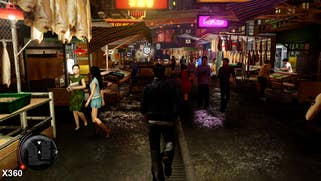

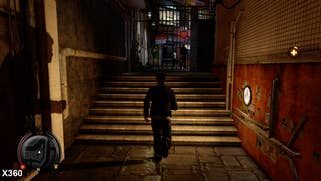
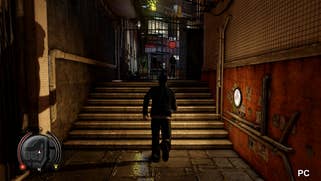
Beyond image quality, United Front Games has clearly boosted the PC game up considerably in other areas. The environments benefit from more intricate detail due to higher-resolution textures being in play, which helps to spruce up some of the artwork by giving some surfaces a greater amount of depth - the ground textures in particular are now filled with small cracks and other intricacies barely visible, if at all, on the consoles. Smaller environmental objects also appear more detailed, and the game's LOD system is less aggressive, with higher-quality artwork and additional objects being rendered when the camera is much further away than on the consoles.
A separate high-resolution texture pack has also been released by the publishers. However, this appears to be integrated into the 'core' download package when buying the game from Steam and later installed when the game is activated. We had access to this beforehand with our press download copy, and all our screenshots and videos feature the game with the pack installed.
On top of the upgraded artwork, shadow quality is much improved over the console releases. These elements of the scene are rendered in a higher resolution and are better filtered compared to the Xbox 360 and PS3, while contact-hardening soft shadows are also used, where the shadow penumbra sharpens up when objects interact with them. In addition to the bump in shadow quality, the PC version also features a better use of ambient shading, with higher-quality SSAO and the more advanced HD AO providing increased depth to various scenes while also bringing out even more detail in the characters' faces. Alpha buffers are rendered in higher resolutions than on console, while soft particles further enhance the look of water splashes and other effects.
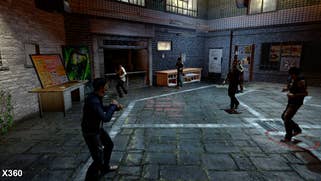

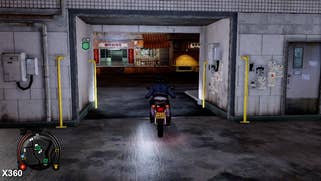

Other enhancements are perhaps a little more subtle in nature - such as the use of higher-precision motion blur effects and specular reflections - while others like depth-of-field have been drastically altered to complement the visual tweaks in other areas. In the case of the latter, the strength of the effect has been dialled back allowing for greater visibility of smaller details found on objects situated far away from the camera, while the quality of the distortion is noticeably cleaner and more defined than you'll see on the 360 or PS3.
Somewhat strange, however, is the situation with regards the use of water shaders in the game: they appear to be on a par with the PS3 game, lacking similar reflections and texture compared to the Xbox 360. There's no logical reason for inferior effects to be used, technically at least, so perhaps this is simply a bug in the game, or an entry in the .ini file which has been set incorrectly.
For those with multi GPU configurations and higher-end systems, the PC release of Sleeping Dogs also comes equipped with a native 3D rendering mode and multiple monitor support for both NVIDIA and ATI graphics cards. Much like with the use of super-sampling, these options are available for those using just a single GPU, but we expect there to be a massive drop-off in terms of performance, particularly when using multiple monitors when running the game this way. In addition to this, there's a benchmark mode to easily test performance without having to manually replay various scenes throughout the game.
Sleeping Dogs: The Digital Foundry Verdict
With Sleeping Dogs, United Front Games has handed in a highly impressive openworld game. The meticulously crafted environments and strong story focus holds together an otherwise 'by the numbers' experience rather well. There's a real sense that the depth offered up by the hand-to-hand combat greatly eclipses that found in other sandbox titles, while the Hong Kong setting creates a more interesting place for events to occur compared to the gritty urban environments found in most open world titles.
Aside from a few issues with regards to a sometimes inconsistent frame-rate, lower-resolution effects and presentation (on the PS3), it's an experience which works very well on all platforms. On the 360, the slightly upscaled framebuffer isn't much cause for concern. Meanwhile, on PlayStation 3, despite the lower-resolution visuals and pared-back texture details and effects, this is still an engrossing experience despite the graphical downgrades. In fact, when it comes down to the gameplay, the PS3 version features a tangible benefit in that the controls somehow feel less 'twitchy' than they do on Xbox 360 - which seems to be down more down to the controller than the code.
Overall Sleeping Dogs is worthy of consideration on both console platforms, but on balance the 360 game is the better buy: minor controller issues aside, the cleaner presentation is preferable over the murkier look of the PS3 game. Naturally, the PC offering provides the best experience out of the three, which comes as no surprise given that there's no fixed hardware limitation on the platform - just the size of your wallet and how much you want to spend on building a mega-powered gaming rig. That said, as the DFPC video above demonstrates, as long as you're realistic with the quality settings, those with more respectable set-ups should be able to play the game smoothly at either 720p or 1080p with most settings ramped up.


